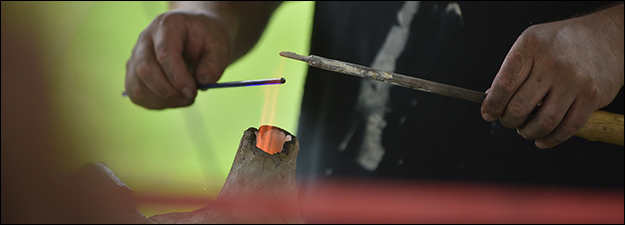Hell Studies: Presenting and Representing Hell
Sponsoring Organization(s)
Societas Daemonetica
Organizer Name
Richard Ford Burley
Organizer Affiliation
Boston College
Presider Name
Nicole Ford Burley
Presider Affiliation
Boston Univ.
Paper Title 1
The Devil's Monstrous Landscapes: Hell on Earth
Presenter 1 Name
Karra Shimabukuro
Presenter 1 Affiliation
Univ. of New Mexico
Paper Title 2
An Aztec Jaguar Warrior in Hell and the Dating of the Albi Cathedral Last Judgment
Presenter 2 Name
James Bugslag
Presenter 2 Affiliation
Univ. of Manitoba
Start Date
13-5-2016 10:00 AM
Session Location
Schneider 1280
Description
Representations of Hell appear throughout the Middle Ages, in textual descriptions, manuscript illuminations, portal sculpture, wall paintings - indeed, in nearly every representational medium across Europe from the 5th century to the 15th. How is Hell represented? How are its occupants characterized? From the cold and serpent-filled Hell of the Blickling Homilies to the fiery and torturous one that adorns the façade of Autun, the presentation and representation of Hell has been done in many ways and, it would appear, to many ends. This session seeks to bring scholars from various disciplines together to discuss the ways in which “the other place” is offered up to medieval audiences for consumption, and the insights which can be derived from its study.
Hell Studies: Presenting and Representing Hell
Schneider 1280
Representations of Hell appear throughout the Middle Ages, in textual descriptions, manuscript illuminations, portal sculpture, wall paintings - indeed, in nearly every representational medium across Europe from the 5th century to the 15th. How is Hell represented? How are its occupants characterized? From the cold and serpent-filled Hell of the Blickling Homilies to the fiery and torturous one that adorns the façade of Autun, the presentation and representation of Hell has been done in many ways and, it would appear, to many ends. This session seeks to bring scholars from various disciplines together to discuss the ways in which “the other place” is offered up to medieval audiences for consumption, and the insights which can be derived from its study.

